P,P'-DDD
Synonym(s):1,1-Dichloro-2,2-bis(4-chlorophenyl)ethane;4,4′-DDD;TDE
- CAS NO.:72-54-8
- Empirical Formula: C14H10Cl4
- Molecular Weight: 320.04
- MDL number: MFCD00000851
- EINECS: 200-783-0
- SAFETY DATA SHEET (SDS)
- Update Date: 2024-12-18 14:15:32
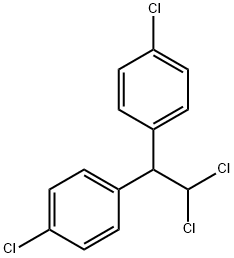
What is P,P'-DDD?
Chemical properties
colourless to off-white crystals
Chemical properties
TDE is a colorless, combustible, crystalline compound.
The Uses of P,P'-DDD
4,4'-Dichlorodiphenyldichloroethane is a synthetic organochlorine insecticide. 4,4'-Dichlorodiphenyldichloroethane is a metabolite of 4,4'-Dichlorodiphenyltrichloroethane (D434195). 4,4'-Dichlorodiphenyldichloroethane is a probable carcinogen (Group B2).
The Uses of P,P'-DDD
Contact control of leaf rollers and other insects on vegetables and tobacco
Definition
ChEBI: A chlorophenylethane that is 2,2-bis(p-chlorophenyl)ethane substituted by two chloro groups at position 1. It is a metabolite of the organochlorine insecticide, DDT.
General Description
A colorless crystalline solid. Insoluble in water and sinks in water. Toxic by inhalation, skin absorption or ingestion. Used as a pesticide.
Air & Water Reactions
Insoluble in water.
Reactivity Profile
TDE is a halogenated hydrocarbon. Compounds in this group may react with acids, bases, and oxidizing and reducing agents. They are incompatible with alkali, and strong oxidizers, in particular.
Hazard
Toxic by ingestion, inhalation, and skin absorption; use restricted in some states. Questionable carcinogen.
Health Hazard
A derivative of DDT; toxic properties similar to DDT; systemic effects from ingestion include headache, anesthesia, cardiacarrhythmias, nausea, vomiting, sweating,and convulsions; oral lethal dose in mice600 mg/kg; also moderately toxic by skinabsorption; susceptible to accumulation infat; sufficient evidence of carcinogenicity inexperimental animals.
LD50 oral (rat): 113 mg/kg
LD50 skin (rabbit): 1200 mg/kg.
Fire Hazard
Special Hazards of Combustion Products: Irritating hydrogen chloride fumes may form in fires.
Safety Profile
Confirmed carcinogen withexperimental carcinogenic, neoplastigenic, andtumorigenic data. Poison by ingestion. Moderately toxicby skin contact. Mutation data reported. An insecticide.When heated to decomposition it emits toxic fumes ofCl-.
Potential Exposure
A potential danger to those involved in the manufacture, formulation and application of this insecticide. In an action of March 18, 1971, EPA cancelled all pesticide uses of this product which is a metabolite of DDT. Hence it is no longer manufactured commercially.
Environmental Fate
Biological. It was reported that p,p′-DDD, a major biodegradation product of p,p′-
DDT, was degraded by Aerobacter aerogenes under aerobic conditions to yield 1-chloro-
2,2-bis(p-chlorophenyl)ethylene, 1-chloro-2,2-bis-(p-chlorophenyl)ethane and 1,1-bis(pchlorophenyl)ethylene. Under anaerobic conditions, however, four additional compounds
were identified: bis(p-chlorophenyl)acetic acid, p,p′-dichlorodiphenylmethane, p,p′-
dichlorobenzhydrol and p,p′-dichlorobenzophenone (Fries, 1972). Under reducing conditions, indigenous microbes in Lake Michigan sediments degraded DDD to 2,2-bis(pchlorophenyl)ethane and 2,2-bis(p-chlorophenyl)ethanol (Leland et al., 1973). Incubation
of p,p′-DDD with hematin and ammonia gave 4,4′-dichlorobenzophenone, 1-chloro-2,2-
bis-(p-chlorophenyl)ethylene and bis(p-chlorophenyl)acetic acid methyl ester (Quirke et
al., 1979). Using settled domestic wastewater inoculum, p,p′-DDD (5 and 10 mg/L) did
not degrade after 28 days of incubation at 25°C (Tabak et al., 1981).
Chemical/Physical. The hydrolysis rate constant for p,p′-DDD at pH 7 and 25°C was
determined to be 2.8 × 10–6/hour, resulting in a half-life of 28.2 years (Ellington et al.,
1987). 2,2-Bis(4-chlorophenyl)-1-chloroethene and hydrochloric acid were
Shipping
UN2811 Toxic solids, organic, n.o.s., Hazard Class: 6.1; Labels: 6.1-Poisonous materials, Technical Name Required. UN2761 Organochlorine pesticides, solid, toxic, Hazard Class: 6.1; Labels: 6.1-Poisonous materials.
Purification Methods
Crystallise DDD from EtOH and dry it in vacuo. The purity is checked by TLC. [Beilstein 5 III 1830.] TOXIC INSECTICIDE.
Incompatibilities
Incompatible with oxidizers (chlorates, nitrates, peroxides, permanganates, perchlorates, chlorine, bromine, fluorine, etc.); contact may cause fires or explosions. Keep away from alkaline materials, strong bases, strong acids, oxoacids, epoxides.
Waste Disposal
Incineration in a unit operating above 850℃ equipped with HCl scrubber. Incineration above 1200℃ for 1-2 seconds is recommended. In accordance with 40CFR165, follow recommendations for the disposal of pesticides and pesticide containers. Must be disposed properly by following package label directions or by contacting your local or federal environmental control agency, or by contacting your regional EPA office.
Properties of P,P'-DDD
| Melting point: | 94-96 °C |
| Boiling point: | 405.59°C (rough estimate) |
| Density | 1.385 g/cm3 |
| vapor density | 11 |
| vapor pressure | 8.25, 12.2 at 25 °C (subcooled liquid vapor pressure calculated from GC retention time data,Hinckley et al., 1990) |
| refractive index | 1.6000 (estimate) |
| Flash point: | 11 °C |
| storage temp. | APPROX 4°C
|
| solubility | Chloroform: Slightly Soluble |
| form | Solid |
| form | neat |
| color | Crystalline white solid |
| Water Solubility | 90ug/L(25 ºC) |
| Merck | 3061 |
| BRN | 1914072 |
| Henry's Law Constant | 3.27 at 5 °C, 5.63 at 15 °C, 7.30 at 20 °C, 9.47 at 25 °C, 20.7 at 35 °C:in 3% NaCl solution: 3.95
at 5 °C, 7.70 at 15 °C, 15.8 at 25 °C, 27.6 at 35 °C (gas stripping-GC, Cetin et al., 2006) |
| Stability: | Stable. Incompatible with strong oxidizing agents. |
| CAS DataBase Reference | 72-54-8(CAS DataBase Reference) |
| EPA Substance Registry System | p,p'-DDD (72-54-8) |
Safety information for P,P'-DDD
| Signal word | Danger |
| Pictogram(s) |
 Skull and Crossbones Acute Toxicity GHS06  Health Hazard GHS08  Environment GHS09 |
| GHS Hazard Statements |
H301:Acute toxicity,oral H312:Acute toxicity,dermal H351:Carcinogenicity H410:Hazardous to the aquatic environment, long-term hazard |
| Precautionary Statement Codes |
P201:Obtain special instructions before use. P273:Avoid release to the environment. P280:Wear protective gloves/protective clothing/eye protection/face protection. |
Computed Descriptors for P,P'-DDD
New Products
(S)-3-Aminobutanenitrile hydrochloride 4-Methylphenylacetic acid N-Boc-D-alaninol N-BOC-D/L-ALANINOL Tert-butyl bis(2-chloroethyl)carbamate 3-Morpholino-1-(4-nitrophenyl)-5,6-dihydropyridin- 2(1H)-one Furan-2,5-Dicarboxylic Acid Tropic acid 1-Bromo-3,5-Di-Tert-Butylbenzene S-2-CHLORO PROPIONIC ACID ETHYL ISOCYANOACETATE 2-Bromo-1,3-Bis(Dimethylamino)Trimethinium Hexafluorophosphate 4-IODO BENZOIC ACID 3-NITRO-2-METHYL ANILINE 1-(2,4-DICHLOROPHENYL) ETHANAMINE (2-Hydroxyphenyl)acetonitrile 4-Bromopyrazole 2-(Cyanocyclohexyl)acetic acid 4-methoxy-3,5-dinitropyridine 1-(4-(aminomethyl)benzyl)urea hydrochloride 2-aminopropyl benzoate hydrochloride diethyl 2-(2-((tertbutoxycarbonyl)amino) ethyl)malonate tert-butyl 4- (ureidomethyl)benzylcarbamate Ethyl-2-chloro((4-methoxyphenyl)hydrazono)acetateRelated products of tetrahydrofuran
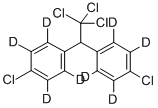
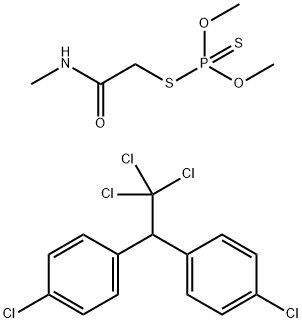
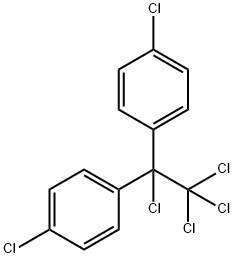

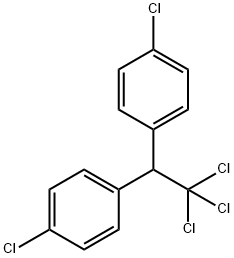


![1,1,1-TRICHLORO-2,2-BIS-[4-CHLOROPHENYL]ETHANE-RING-UL-14C](https://img.chemicalbook.in/CAS/GIF/29411-63-0.gif)
You may like
-
 2,2-Bis(4-chlorophenyl)-1,1-dichloroethane CAS 72-54-8View Details
2,2-Bis(4-chlorophenyl)-1,1-dichloroethane CAS 72-54-8View Details
72-54-8 -
 4,4′-DDD CAS 72-54-8View Details
4,4′-DDD CAS 72-54-8View Details
72-54-8 -
 1975-50-4 98%View Details
1975-50-4 98%View Details
1975-50-4 -
 2-HYDROXY BENZYL ALCOHOL 98%View Details
2-HYDROXY BENZYL ALCOHOL 98%View Details
90-01-7 -
 2-Chloro-1,3-Bis(Dimethylamino)Trimethinium Hexafluorophosphate 221615-75-4 98%View Details
2-Chloro-1,3-Bis(Dimethylamino)Trimethinium Hexafluorophosphate 221615-75-4 98%View Details
221615-75-4 -
 61397-56-6 CIS BROMO BENZOATE 98%View Details
61397-56-6 CIS BROMO BENZOATE 98%View Details
61397-56-6 -
 14714-50-2 (2-Hydroxyphenyl)acetonitrile 98+View Details
14714-50-2 (2-Hydroxyphenyl)acetonitrile 98+View Details
14714-50-2 -
 118753-70-1 98+View Details
118753-70-1 98+View Details
118753-70-1